Abstract
The effect of pre-immunization with soluble haptenated serum proteins or haptenated carbohydrates on the subsequent responses to the hapten in thymus-dependent or thymus-independent form was investigated. In certain cases both thymus-dependent and -independent responses were suppressed whilst in others a differential suppression of thymus-independent responsiveness was observed. These results are discussed in terms of B-cell subpopulations and mechanisms of tolerance induction.
Full text
PDF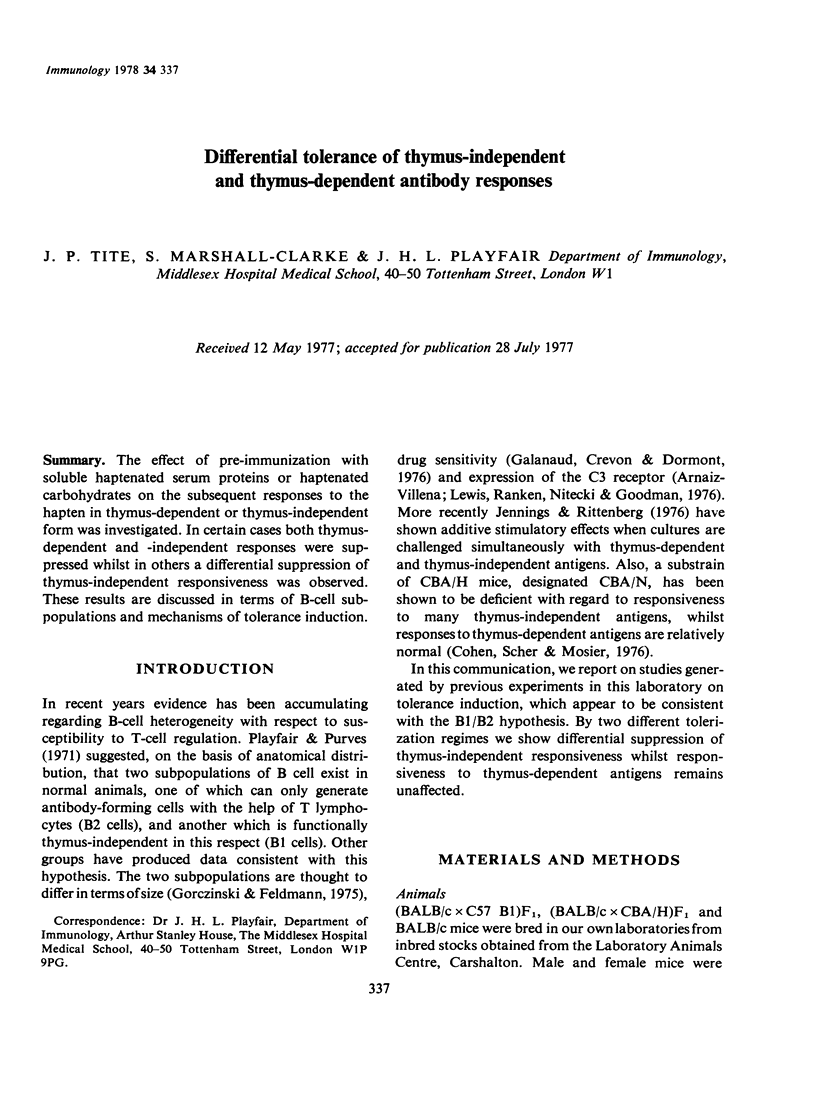
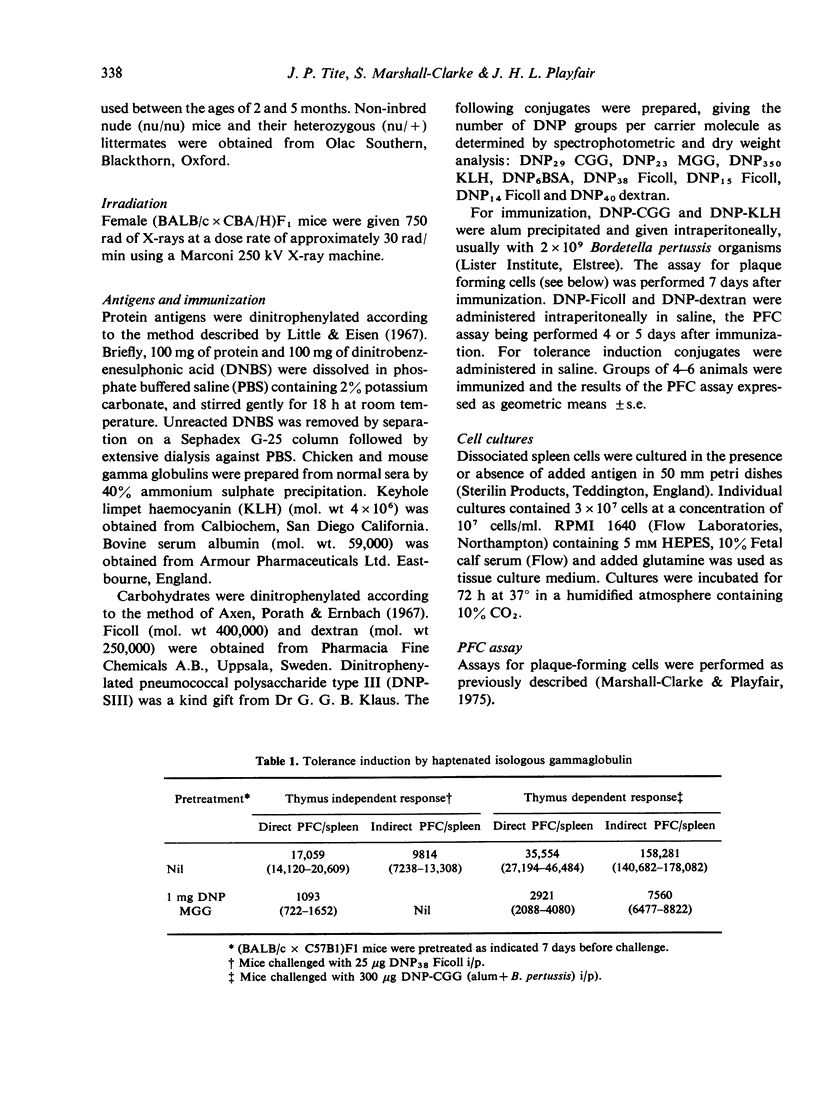
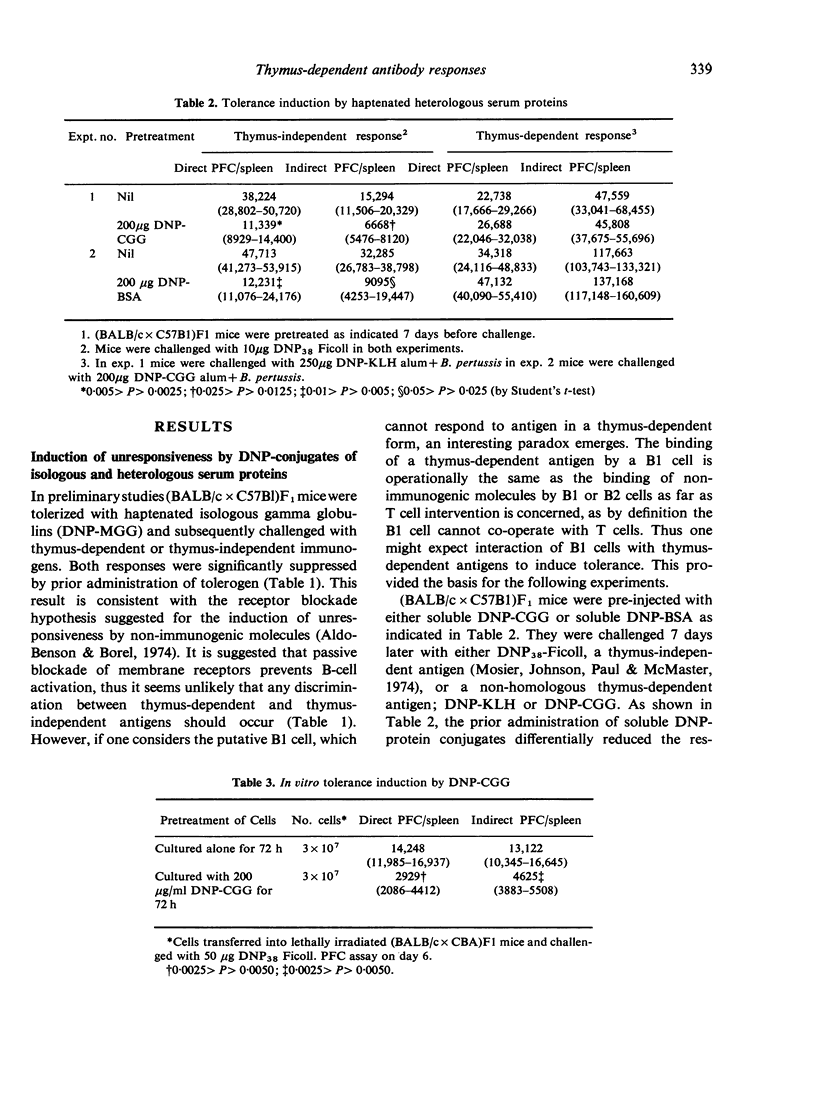
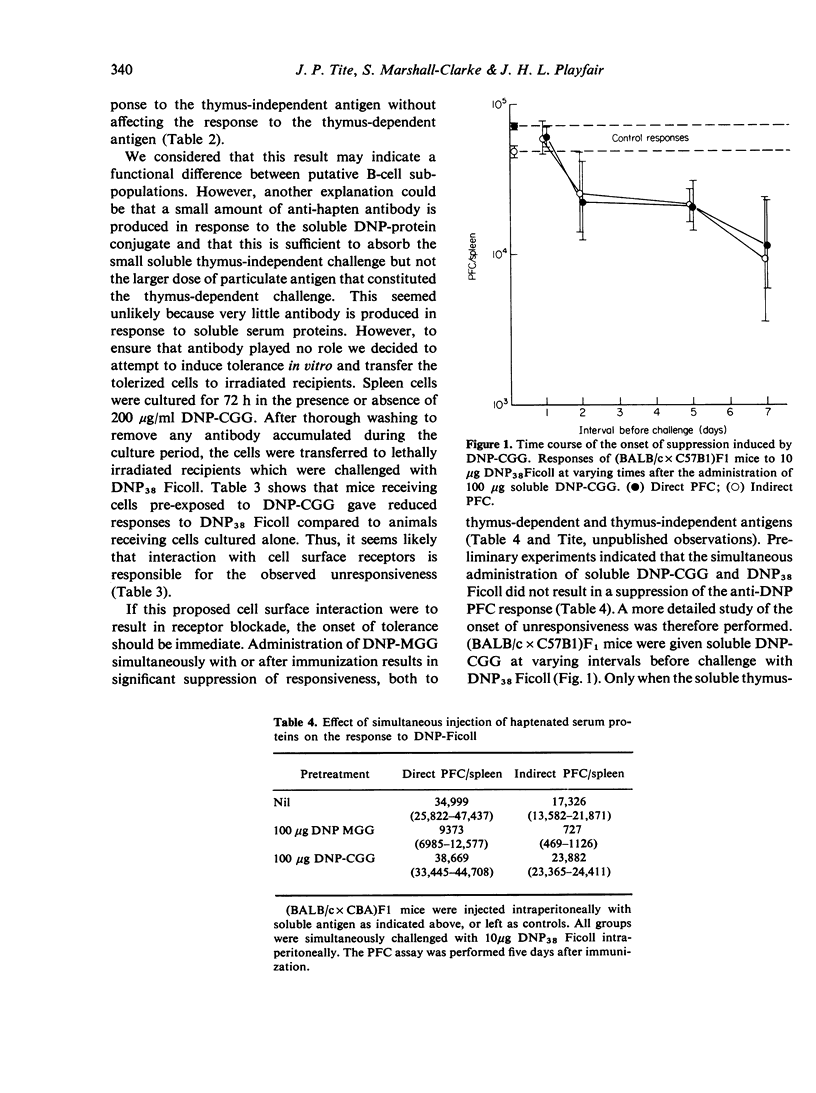
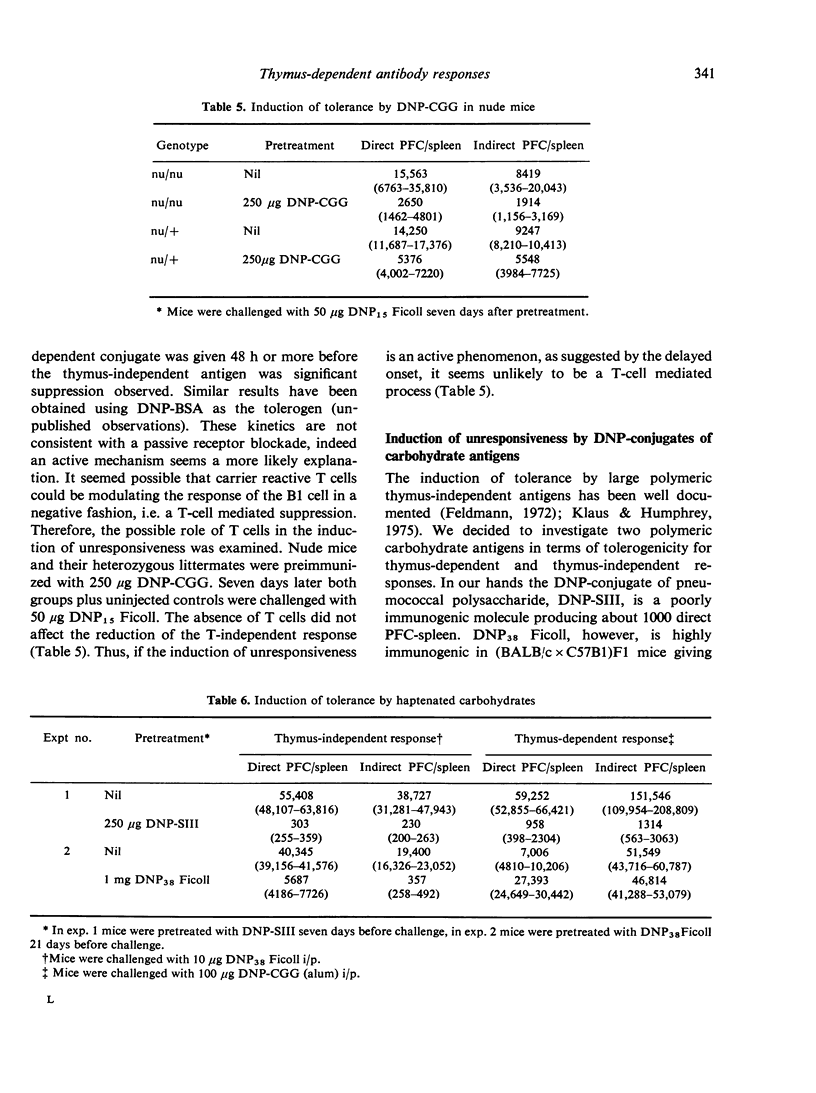
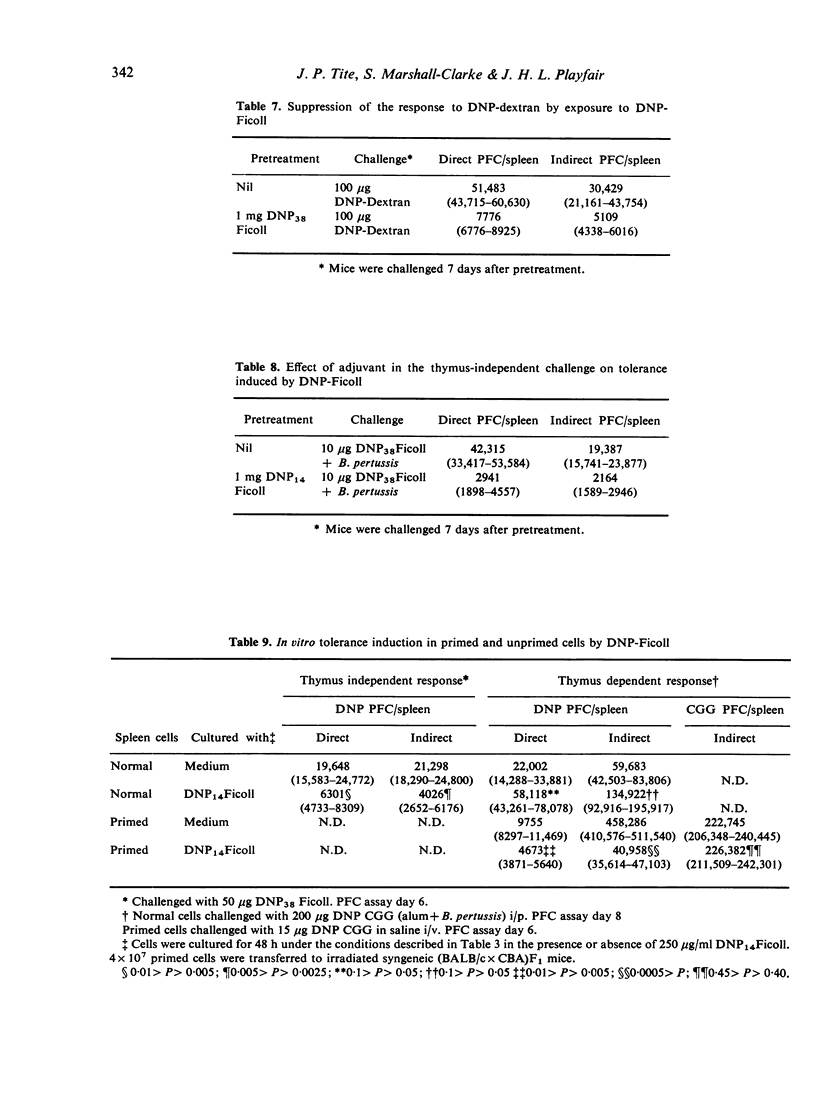
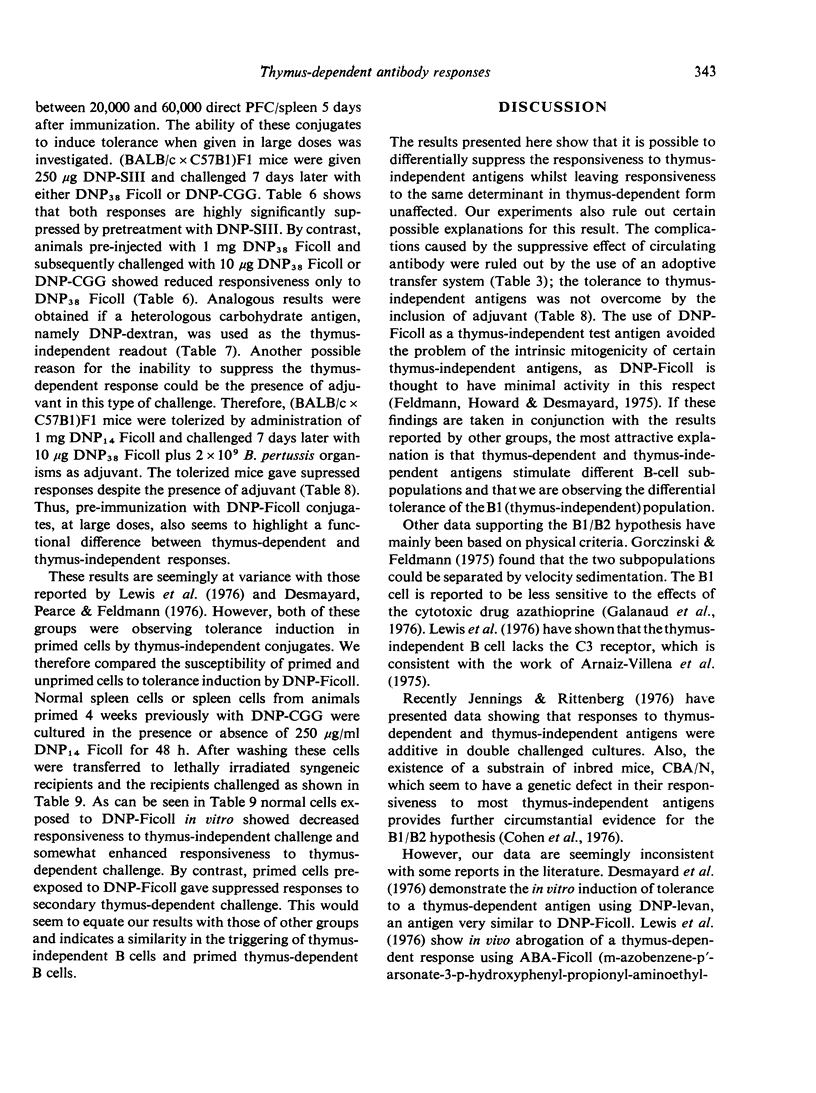
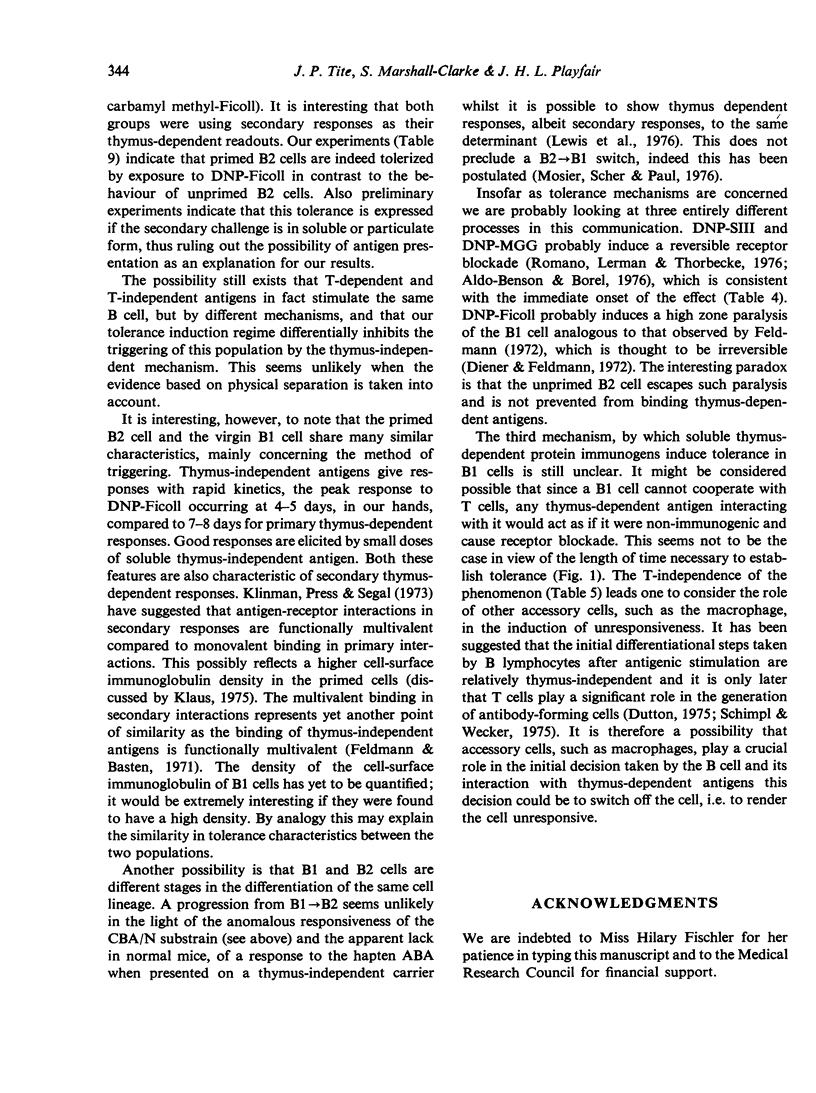
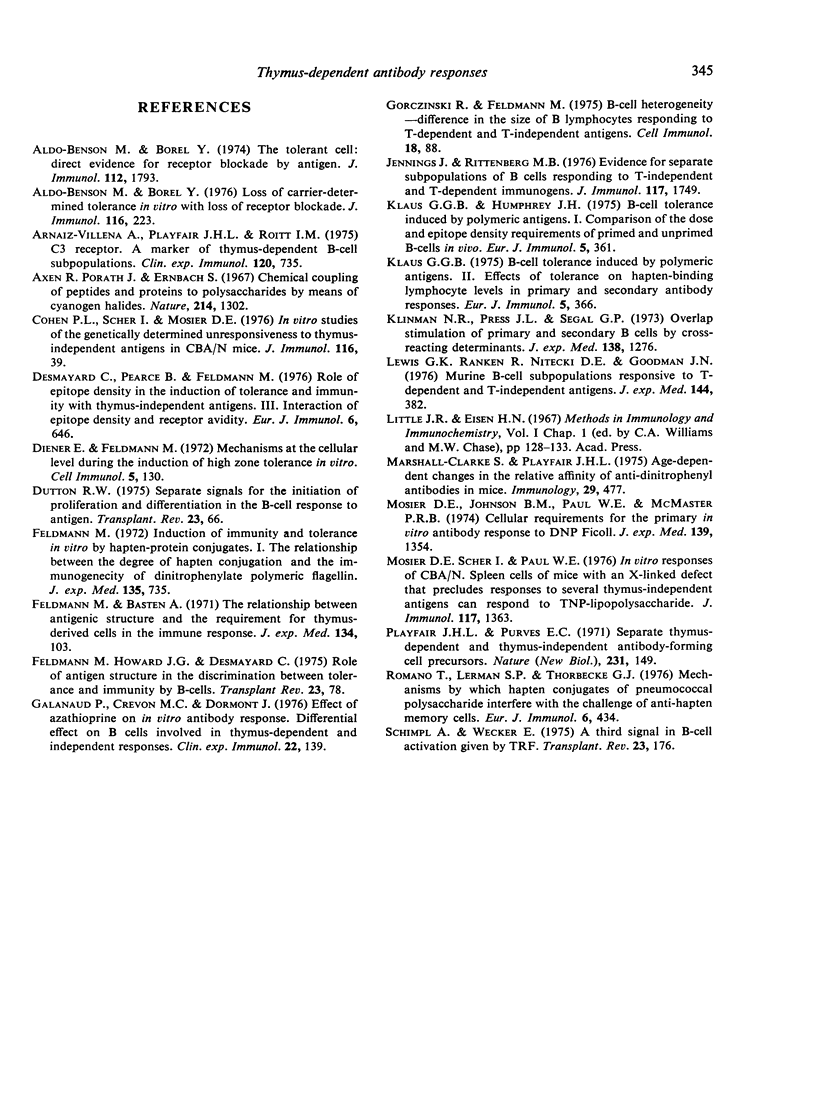
Selected References
These references are in PubMed. This may not be the complete list of references from this article.
- Aldo-Benson M., Borel Y. Loss of carrier-determined tolerance in vitro with loss of receptor blockade. J Immunol. 1976 Jan;116(1):223–226. [PubMed] [Google Scholar]
- Aldo-Benson M., Borel Y. The tolerant cell: direct evidence for receptor blockade by tolerogen. J Immunol. 1974 May;112(5):1793–1803. [PubMed] [Google Scholar]
- Axén R., Porath J., Ernback S. Chemical coupling of peptides and proteins to polysaccharides by means of cyanogen halides. Nature. 1967 Jun 24;214(5095):1302–1304. doi: 10.1038/2141302a0. [DOI] [PubMed] [Google Scholar]
- Desaymard C., Pearce B., Feldmann M. Role of epitope density in the induction of tolerance and immunity with thymus-independent antigens. III. Interaction of epitope density and receptor avidity. Eur J Immunol. 1976 Sep;6(9):646–650. doi: 10.1002/eji.1830060910. [DOI] [PubMed] [Google Scholar]
- Diener E., Feldmann M. Mechanisms at the cellular level during induction of high zone tolerance in vitro. Cell Immunol. 1972 Sep;5(1):130–136. doi: 10.1016/0008-8749(72)90090-1. [DOI] [PubMed] [Google Scholar]
- Dutton R. W. Separate signals for the initiation of proliferation and differentiation in the b cell response to antigen. Transplant Rev. 1975;23:66–77. doi: 10.1111/j.1600-065x.1975.tb00149.x. [DOI] [PubMed] [Google Scholar]
- Feldmann M., Easten A. The relationship between antigenic structure and the requirement for thymus-derived cells in the immune response. J Exp Med. 1971 Jul 1;134(1):103–119. doi: 10.1084/jem.134.1.103. [DOI] [PMC free article] [PubMed] [Google Scholar]
- Feldmann M. Induction of immunity and tolerance in vitro by hapten protein conjugates. I. The relationship between the degree of hapten conjugation and the immunogenicity of dinitrophenylated polymerized flagellin. J Exp Med. 1972 Apr 1;135(4):735–753. doi: 10.1084/jem.135.4.735. [DOI] [PMC free article] [PubMed] [Google Scholar]
- Galanaud P., Crevon M. C., Dormont J. Effect of azathioprine on in vitro antibody response. Differential effect on B cells involved in thymus-dependent and independent responses. Clin Exp Immunol. 1975 Oct;22(1):139–152. [PMC free article] [PubMed] [Google Scholar]
- Gorczynski R. M., Feldmann M. B Cell heterogeneity - difference in the size of B lymphocytes responding to T dependent and T independent antigens. Cell Immunol. 1975 Jul;18(1):88–97. doi: 10.1016/0008-8749(75)90039-8. [DOI] [PubMed] [Google Scholar]
- Jennings J. J., Rittenberg M. B. Evidence for separate subpopulations of B cells responding to T-independent and T-dependent immunogens. J Immunol. 1976 Nov;117(5 PT2):1749–1752. [PubMed] [Google Scholar]
- Klaus G. G. B cell tolerance induced by polymeric antigens. II. Effects of tolerance on hapten-binding lymphocyte levels in primary and secondary antibody responses. Eur J Immunol. 1976 Jun;5(6):366–372. doi: 10.1002/eji.1830050603. [DOI] [PubMed] [Google Scholar]
- Klaus G. G., Humphrey J. H. B cell tolerance induced by polymeric antigens. I. Comparison of the dose and epitope density requirements for inactivation of primed and unprimed B cells in vivo. Eur J Immunol. 1976 Jun;5(6):361–365. doi: 10.1002/eji.1830050602. [DOI] [PubMed] [Google Scholar]
- Klinman N. R., Press J. L., Segal G. P. Overlap stimulation of primary and secondary B cells by cross-reacting determinants. J Exp Med. 1973 Nov 1;138(5):1276–1281. doi: 10.1084/jem.138.5.1276. [DOI] [PMC free article] [PubMed] [Google Scholar]
- Lewis G. K., Ranken R., Nitecki D. E., Goodman J. W. Murine B-cell subpopulations responsive to T-dependent and T-independent antigens. J Exp Med. 1976 Aug 1;144(2):382–397. doi: 10.1084/jem.144.2.382. [DOI] [PMC free article] [PubMed] [Google Scholar]
- Marshall-Clarke S., Playfair J. H. Age-dependent changes in the relative affinity of anti-dinitrophenyl antibodies in mice. Immunology. 1975 Sep;29(3):477–486. [PMC free article] [PubMed] [Google Scholar]
- Mosier D. E., Johnson B. M., Paul W. E., McMaster P. R. Cellular requirements for the primary in vitro antibody response to DNP-ficoll. J Exp Med. 1974 May 1;139(5):1354–1360. doi: 10.1084/jem.139.5.1354. [DOI] [PMC free article] [PubMed] [Google Scholar]
- Mosier D. E., Scher I., Paul W. E. In vitro responses of CBA/N mice: spleen cells of mice with an X-linked defect that precludes immune responses to several thymus-independent antigens can respond to TNP-lipopolysaccharide. J Immunol. 1976 Oct;117(4):1363–1369. [PubMed] [Google Scholar]
- Playfair J. H., Purves E. C. Separate thymus dependent and thymus independent antibody forming cell precursors. Nat New Biol. 1971 Jun 2;231(22):149–151. doi: 10.1038/newbio231149a0. [DOI] [PubMed] [Google Scholar]
- Romano T. J., Lerman S. P., Thorbecke G. J. Mechanisms by which hapten conjugates of pneumococcal polysaccharide interfere with the challenge of anti-hapten memory cells. Eur J Immunol. 1976 Jun;6(6):434–442. doi: 10.1002/eji.1830060611. [DOI] [PubMed] [Google Scholar]
- Schimpl A., Wecker E. A third signal in B cell activation given by TRF. Transplant Rev. 1975;23:176–188. doi: 10.1111/j.1600-065x.1975.tb00157.x. [DOI] [PubMed] [Google Scholar]


